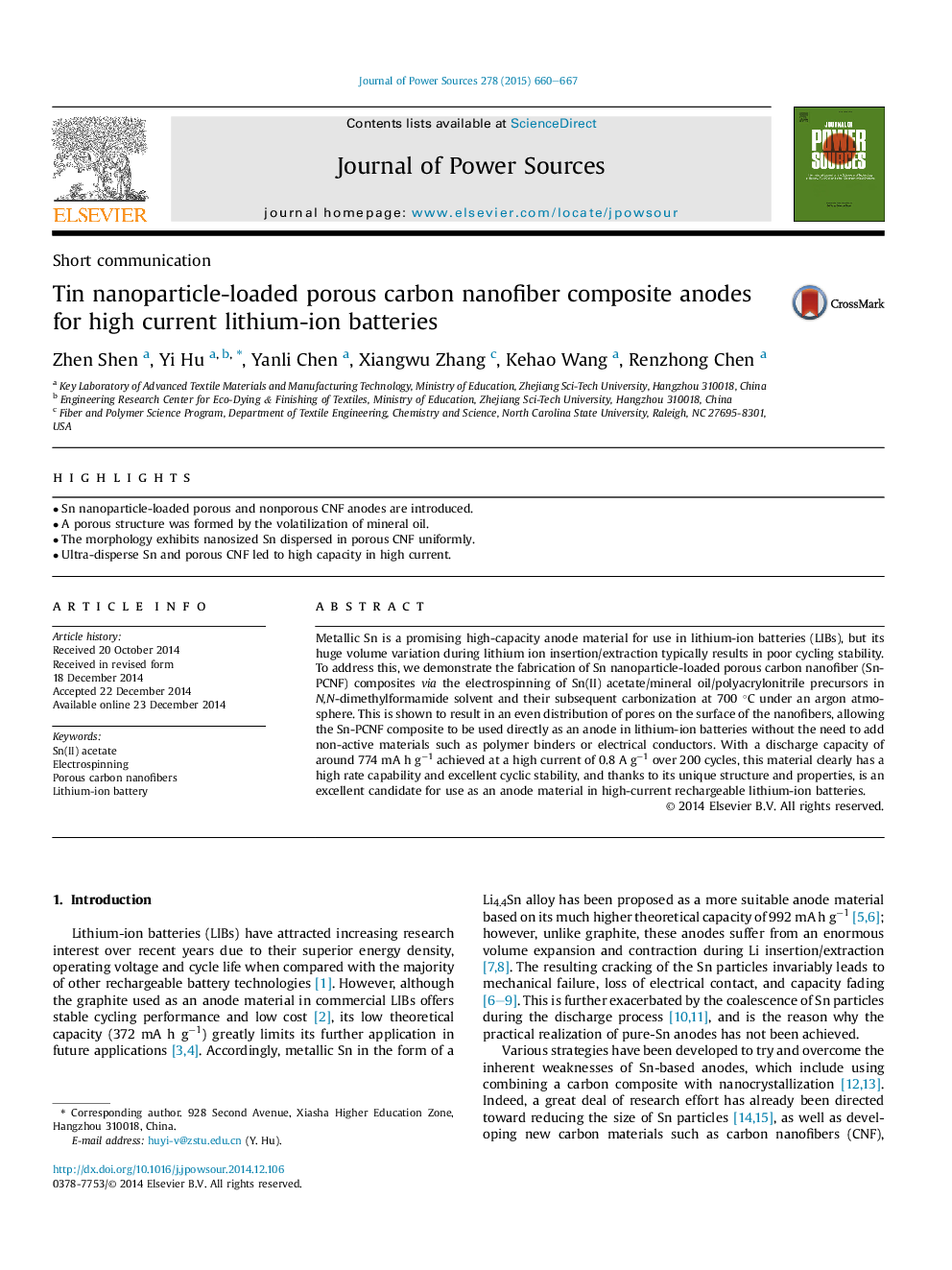| Article ID | Journal | Published Year | Pages | File Type |
|---|---|---|---|---|
| 7734158 | Journal of Power Sources | 2015 | 8 Pages |
Abstract
Metallic Sn is a promising high-capacity anode material for use in lithium-ion batteries (LIBs), but its huge volume variation during lithium ion insertion/extraction typically results in poor cycling stability. To address this, we demonstrate the fabrication of Sn nanoparticle-loaded porous carbon nanofiber (Sn-PCNF) composites via the electrospinning of Sn(II) acetate/mineral oil/polyacrylonitrile precursors in N,N-dimethylformamide solvent and their subsequent carbonization at 700 °C under an argon atmosphere. This is shown to result in an even distribution of pores on the surface of the nanofibers, allowing the Sn-PCNF composite to be used directly as an anode in lithium-ion batteries without the need to add non-active materials such as polymer binders or electrical conductors. With a discharge capacity of around 774 mA h gâ1 achieved at a high current of 0.8 A gâ1 over 200 cycles, this material clearly has a high rate capability and excellent cyclic stability, and thanks to its unique structure and properties, is an excellent candidate for use as an anode material in high-current rechargeable lithium-ion batteries.
Related Topics
Physical Sciences and Engineering
Chemistry
Electrochemistry
Authors
Zhen Shen, Yi Hu, Yanli Chen, Xiangwu Zhang, Kehao Wang, Renzhong Chen,
